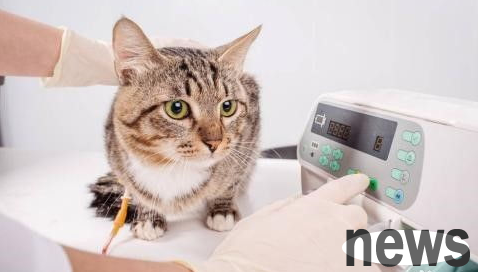Artitis, also known as degenerative arthritis (DJD), is more common in humans and dogs, but it can also occur in cats. Because cats are experts in hiding pain, cats' arthritis is easily overlooked.
Definition When the cartilage at the end of the buffer bone ruptures, arthritis occurs.
There are many reasons for cartilage rupture, such as injury, infection, chronic wear and tear.
Hip dysplasia is also a cause of congenital arthritis. It is very common in dogs and of course in cats.
Obacteria can also cause cats to be more susceptible to arthritis. In addition, degeneration of toes is also very common in cats.

Symptoms
Cats with arthritis have subtle changes in their bodies and behaviors. This chronic disease makes cats have strong tolerance for this kind of chronic disease, so they generally don’t scream. Some cats will feel stiff when walking, start to limp or prefer to use a certain leg. It may not be as active as before, no longer like playing, no longer likes to hang out on cats, or even no longer fall in love with the sofa on the bed.
The easiest way to diagnose
is to take an X-ray. This method can not only diagnose arthritis, but also further rule out the possibility of fractures, tumors and other diseases. Some doctors may also take joint fluid samples to rule out other possible reasons.
Treatment is an essential step for overweight cats. Because after losing weight, it will reduce the damage to the joints caused by stress. A reliable doctor will give you a reasonable weight loss plan. At the same time, it is best to make the affected cat live as easy as possible, such as food, water and litter box, which are best placed closest to its daily activity area. In addition, it is best to replace the cat litter box with a relatively low threshold. Replace the bed with a softer and more comfortable one. For some relatively high places, steps or slopes can be designed.
Pharm
Pain control is a very important part of the treatment of arthritis. However, most painkillers that people take, such as the most common paracetamol, are poisonous in cats, so you should never give cats human medicine at will. Similarly, many pain-relieving drugs for dogs are also unsafe for cats.

Therefore, be sure to buy drugs specially designed for cats. Here is a summary of common drugs for arthritis:
Glucosamine-Chandroitin: Strengthen the cartilage tissue on the surface of the joint to slow the progress of the disease. In the early stages of arthritis, this type of medication may help manage pain.
Omega-3: Natural anti-inflammatory drug, which can relieve mild pain.
Meloxicam: Nonsteroidal anti-inflammatory drugs were used in dogs and later on cats, and the effect was good. But it has certain side effects on the liver.
Gabapentin, tramadol and buprenorphine: These medicines can be prescribed by a veterinarian.
Generally speaking, drugs for treating arthritis have more or less certain side effects, so when administering the drug, you should start with the lowest dose and try to get an effective dose. I would like to emphasize again that you must not blindly use medicine for cats without any certification.